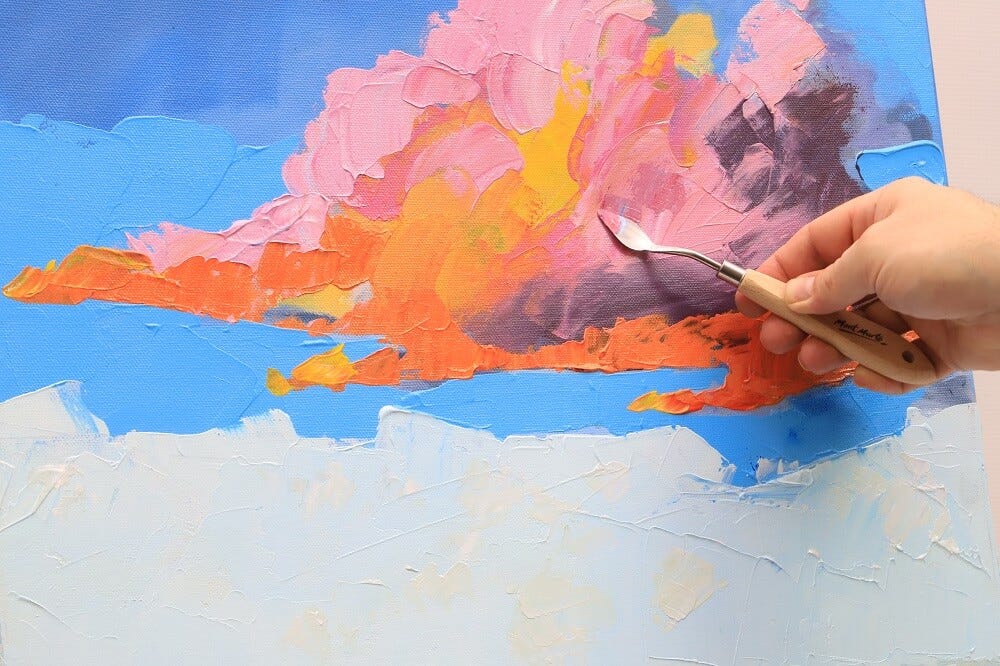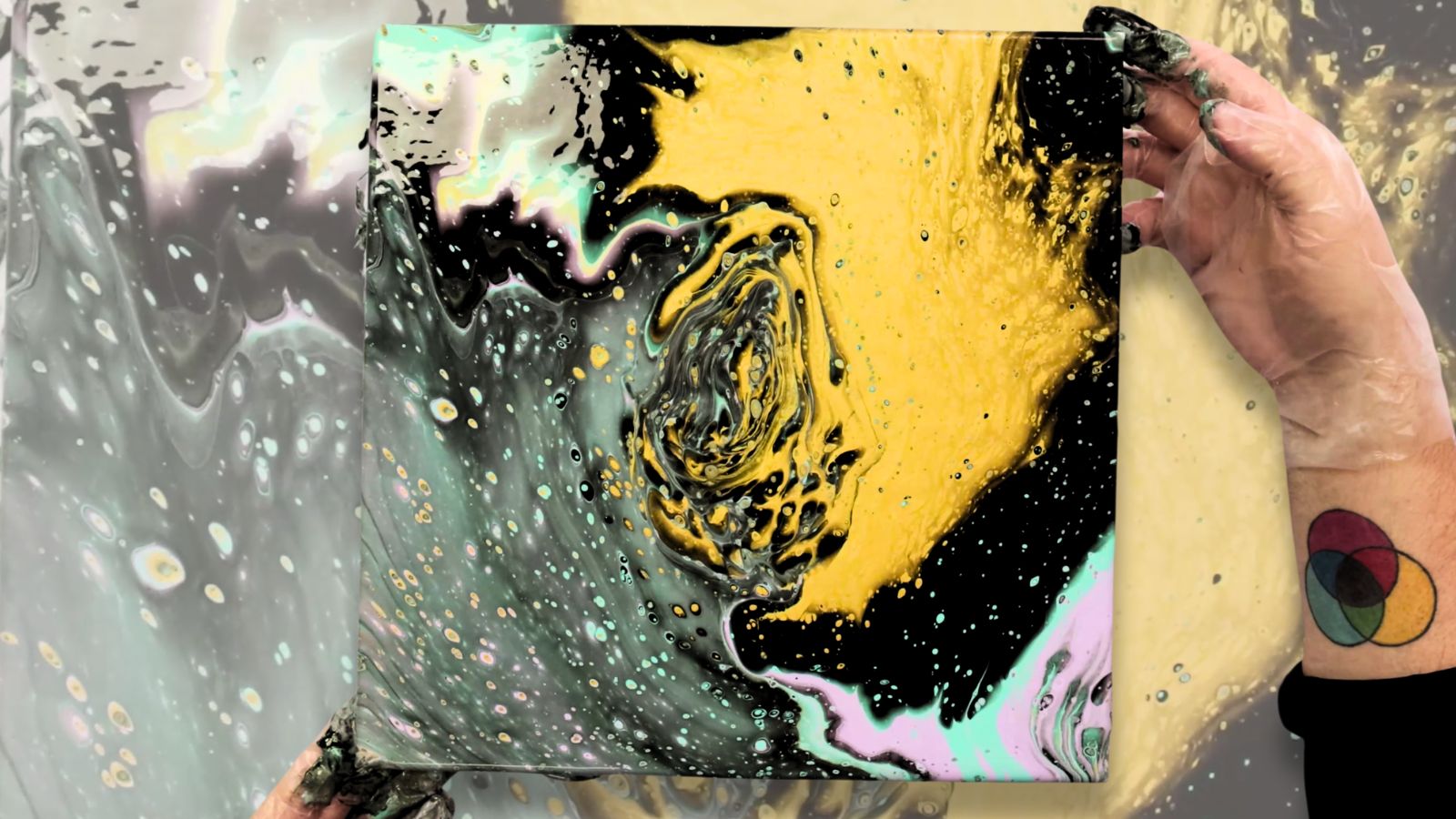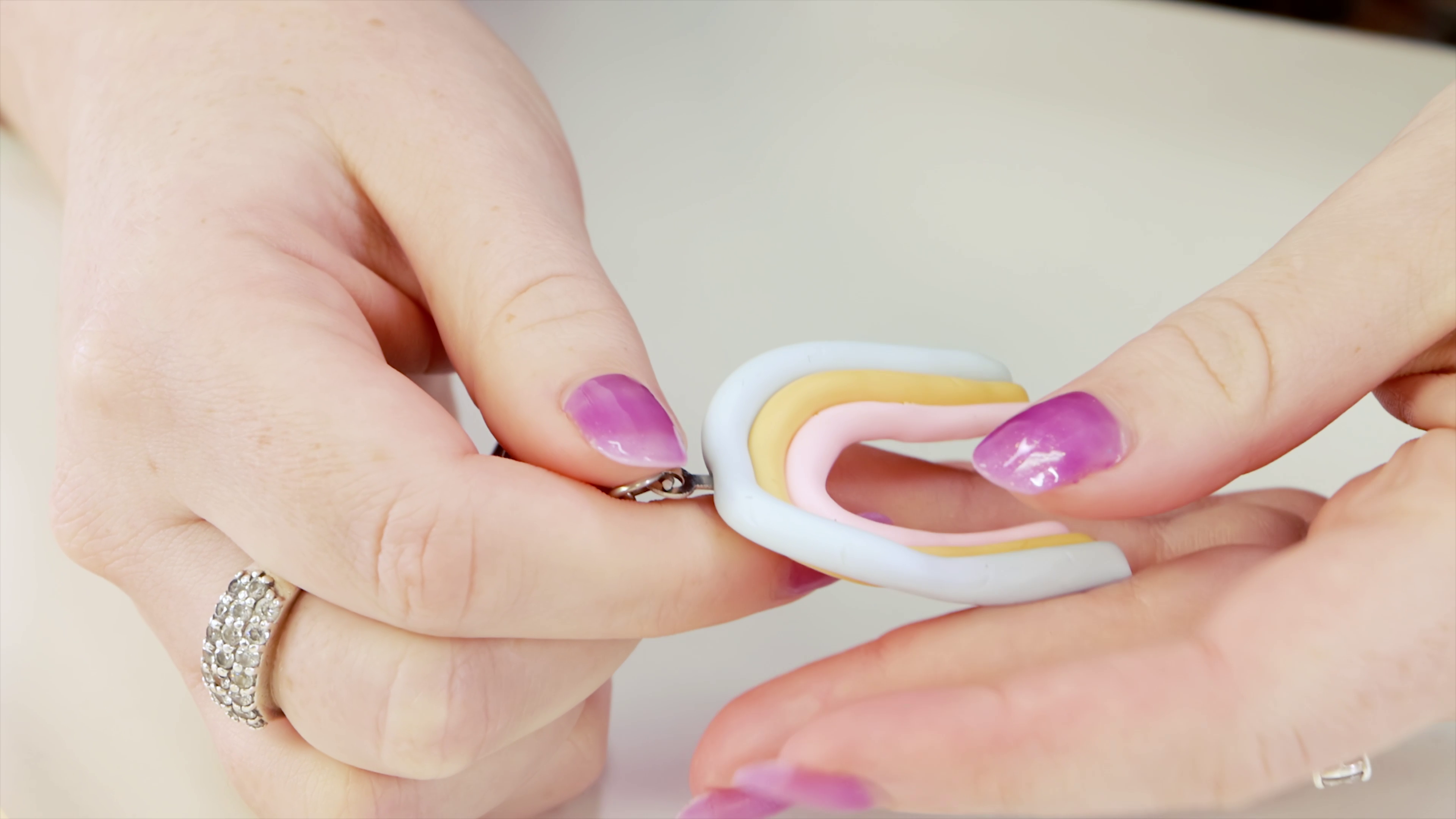From Van Gough to Cezanne and even Matisse, many artists have favoured the humble palette knife when it comes to painting. This unique technique can create artworks that are truly a cut above. Learn for yourself or refresh your knowledge with these 12 palette knife painting tips.

Both palette knives and painting knives can be used to create a range of effects. Traditionally, a painting knife has a flexible steel blade and a palette knife is usually straight with a rounded tip, (this is what makes them great for mixing paint on palettes). Nowadays, with many brands making painting knives into palette knives, these terms are interchangeable.
1. Choose the right knife for your paint

Both oil paint and acrylic paint are compatible with palette knife painting. Acrylics work well because of their smooth consistency and oil paints will create stunning glossy layers, when used alongside the trusty palette knife. Both plastic and stainless-steel knives are great for acrylic, but if oil is more your cup of tea, reach for a stainless-steel painting knife.
2. Choose the right size

Much like choosing a paint brush, the size of your palette knife will depend on what you’re looking to create, so consider what you’re looking to create with the knife. A large palette knife can be used to load up paint for creating an abstract knife painting or to cover large areas such as landscapes. A mid-sized palette knife can create texture, lines and details and a small palette knife will create small, detailed lines like blades of grass, just by using the knife’s edge.
3. Get comfortable with using a knife

A knife feels very different to using a paint brush so it will be worth practicing on a separate canvas first. To get a feel for the knife and become more comfortable using it, try holding the knife at different angles and applying different amounts of pressure, this will help find what works for you and allow you to get familiar with palette knife painting.
4. Layer upon layer if you’re planning to scratch back

Palette knives work best on wood or a coarse grain or weave canvas. Paper isn’t ideal for palette knife painting, especially if you’re planning to scratch back. Consider an underpainting first, this is because you will need a few layers to be painted and then left to dry. This will also help protect your canvas from being damaged from scratching. One of the most used techniques with the palette knife is sgraffito or scratching back. Apply multiple layers of colour first, (this will also protect your canvas so you don’t cut through it) and wait for the layers to dry, then apply wet paint before you scratch back using the tip of the blade to expose colours underneath.
5. Lightly sketch onto canvas first

Clearly, a palette knife won’t be as accurate as a brush, so by sketching a rough sketch onto your canvas first, you can paint with your palette knife and apply colour to the desired area. If you’re underpainting, choose a light colour, once dry you can sketch on top of the layer. This will also help if you’re planning a mixed media approach, and using your palette knife alongside brushes.
6. Mix oil paints with your knife instead of brushes

Skip the washing up on your oil brushes and use your palette knife to mix oil paint instead. Thanks to their straight, flat blades, palette knives are perfect for mixing colours, especially when it comes to thick oil paints. Use a scoop and slide action to mix your colours, before sweeping the knife into the paint, using the long edge of the knife.
7. Scrape away a mistake
One of the best things about palette knife painting is how easy it is to remove wet paint or mistakes.
Simply scrape away the paint to remove, working in an up-and-down motion, or use this technique to remove harsh lines and create a softer focus.
8. Spread the paint for even texture

Here’s a handy palette knife painting tip, for a smooth surface, spread the paint using the flat base of the blade, like spreading butter on bread. This can also be applied to impasto if you’re looking to create dimension but still wanting it to lay flat.
9. Angle your knife for different effects

For thin lines, in your palette knife paintings, press the edge of the knife down to the canvas, this will create sharp, straight lines, perfect for buildings. Or angle the palette knife and use the tip to create interesting textures, this works especially for flowers and feathers. If you’re looking for a thinner coverage, applying the knife at a slight angle and apply firm pressure, this way you can layer and scratch back.
10. Make an impression

Make like the Impressionists and create broken colour using your palette knife. Create gaps of colour, using different colours to create the appearance of light. For this Palette knife painting tip, load your knife then skim the surface using the edge of the knife. Or for Pointillism-like effects, dip the tip of the knife into your paint and dot onto the canvas, to create dots of colour.
11. Create harmony

If you have a work that’s a little bland, palette knifes can lend a hand and bring this work to life. Dabs of yellow can create stunning rays of sunlight, earthy tones can create tree branches and create harmony. But if you’re finding your knife paintings are becoming a little too dominant, a handy palette knife painting tip is to simply reach for a paint brush to softly diffuse the painting with brushwork or use a detailed brush to etch out fine details.
12. Cleaning your knife 
Palette knives are much easier to clean than paint brushes, simply wipe them clean with paper towel/kitchen roll or an old rag. If you’re using multiple colours, you’ll want a clean knife each time to keep them clean. If you want to give them a spring clean or if you have dried paint on them, apply warm soapy water then wipe over with an old rag.
Get started now and follow along with this easy textured painting lesson or if you’re looking for something biggest, try a Leonid Afremov inspired park scene lesson.
We hope that you feel inspired to create using a palette knife. Give it a whirl and share your works with us. #montmarteart or tag us on Facebook or Instagram we’d love to see what you create.





































